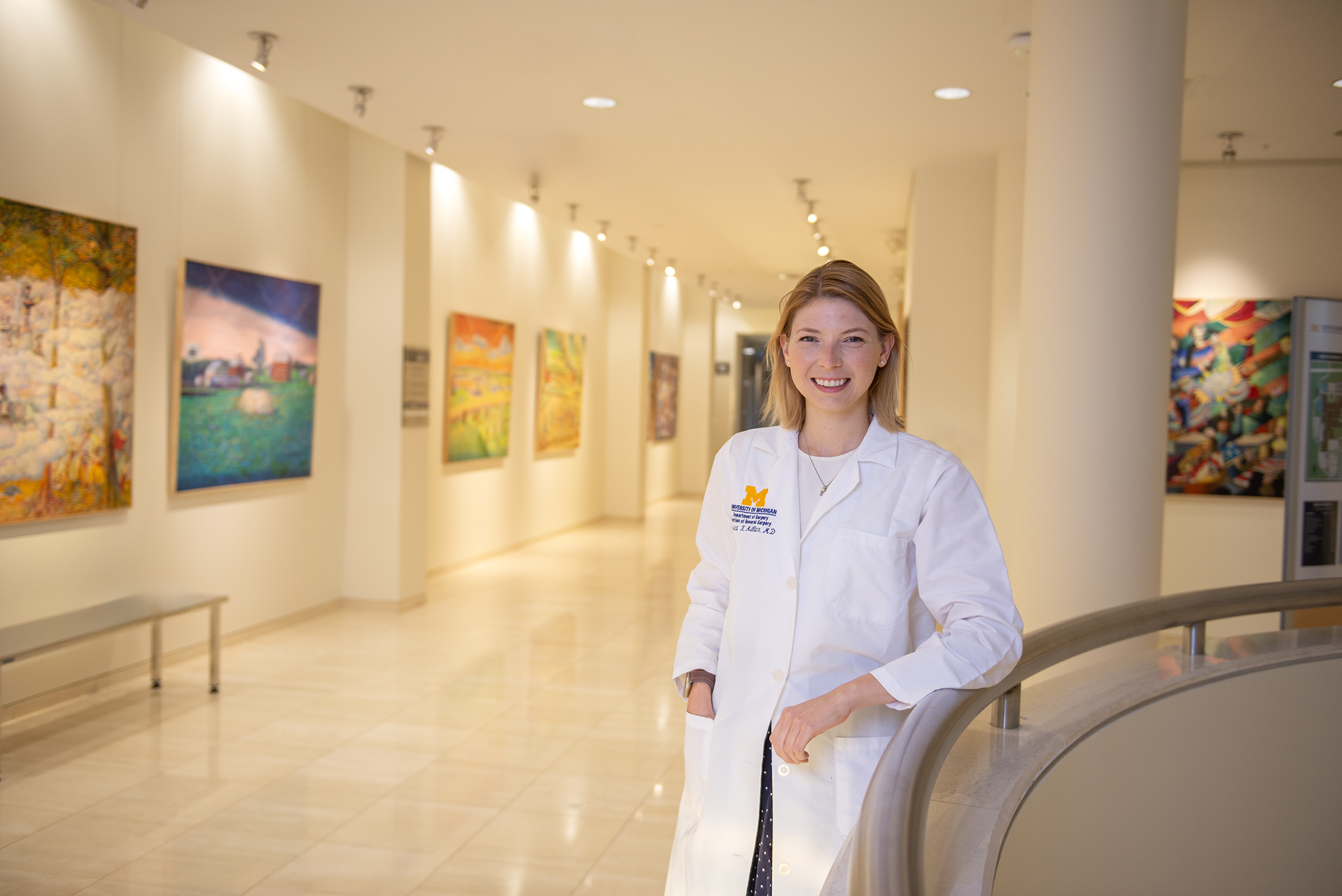Surgeons often gravitate toward a particular pillar of the academic surgical mission. Some shine in research, others are at home in the operating room, and some thrive as teachers. That third pillar, education, is as critical as the others to prepare surgical trainees for future independent practice.
A few years ago, Grace Kim, M.D., created the Academy of Surgical Educators (ASE). The goal? To recognize the department’s best clinical educators (nominated by trainees and faculty) and create opportunities to share their wisdom and inspire others.
A recent panel at Grand Rounds featured ASE members discussing their teaching styles and how they navigate challenging moments. Afterwards, Kim, fellow ASE member Seth Waits, M.D., and General Surgery resident Jessica Millar, M.D., shared what they value as surgical educators and learners.
Building relationships
For Kim, a minimally invasive surgeon, it starts with a good foundation: relationships. It’s important that she and her trainee are on the same page. So, if she needs to give critical feedback, she says, “There’s this common understanding that, ‘Yeah Dr. Kim is doing this because she wants me to understand what I’m doing more, learn from her, or maybe patient care has to be reprioritized.’ So once that context of relationship is laid, things seem to be okay.”
It's something she took from her own training. The most effective educators were the ones who established a relationship with her, so feedback never stung because she knew they had her best interests in mind. Millar’s experience is similar, and she says that attendings who built those relationships also made her feel more engaged with them.
Positivity is also crucial to relationship-building. Waits, a transplant surgeon, said it’s important to name when things are going well. For example, when a trainee masters a classic liver transplant move, he’ll send a group text so everyone can celebrate too.
Creating a safe space to learn
Highlighting the positive plays into Waits’ philosophy that a big part of surgical education is creating a safe space to learn. Balancing patient care and learning can be challenging, but he’s found success by providing a nurturing environment and paying attention to his trainees’ learning styles.
Transplant surgery is also a very high-stress specialty. “It has very little margin for error. And you can do everything perfectly and still have the patient do poorly,” said Waits. Emotionally, this can be tough, so he tries to mentally prepare trainees for that possibility. If something does go poorly, he tries to be there for them however he can – even if that just means with a hug or a conversation over coffee.
Learning in less stressful environments
Laparoscopic surgery, Kim’s specialty, comes with its own teaching challenges given its technical difficulty. Trainees are using different technology and doing the procedure by looking at images on a big screen, which requires a different coordination compared to a classic open procedure. “It’s like surgery plus plus,” she says.
The nice thing about Kim’s practice is that she does high volume elective hernia surgery. The procedural steps remain similar each time, allowing learners to watch and gain experience towards proficiency.
Similarly, Waits uses a 3D-printed model in his office so he and a learner can walk through the motions of a kidney transplant. Everyone who’s practiced on that model has signed it – including Millar. Being able to practice a challenging skill like sewing on arteries without consequence was a nice introduction to her transplant month.

The model isn’t just a helpful tool for Waits’ trainees. Working on the model has helped him learn how to teach the operation better, and he’s grown as an educator because of it.
Opportunities to figure it out
As she’s become a more experienced educator, Kim appreciates the educational value of increasing autonomy. Micromanaging is painful for the learner and educator – she’s found that she can provide the general concepts and tips, and from there, learners are great at filling in the gaps.
And sometimes, the best way to learn is by doing. Millar appreciates when an attending gives her space to troubleshoot a bit. “Some are very quick to take over if things aren’t progressing during a case, and it doesn’t give you the opportunity to problem solve and grow in that moment,” she says.

Millar acknowledges that it’s a fine line to walk for an educator trying to figure out when to step in or let someone work it out. It's something she’s learning now in cases where she’s been the more senior surgeon. It takes practice, but the attendings who’ve modeled it well have inspired her to think about her teaching approach and how to cultivate a good learning environment.
One way she likes to frame it? Surgery is a team sport, like soccer. “Someone has the ball, all eyes are on them, but there’s always a coach telling them which way to go.”
##
By Gillian Golden
